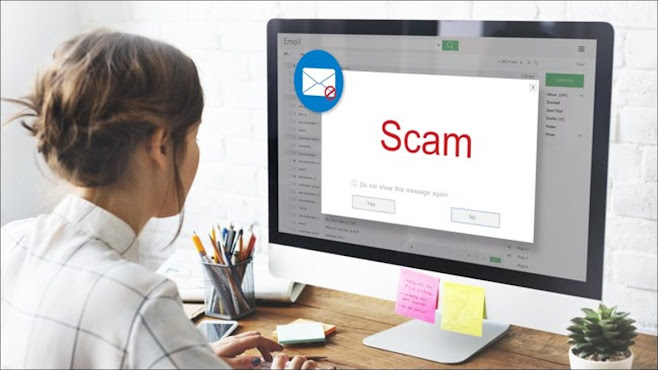Protecting private information is
critical for any company, but it is especially critical for companies that do a lot of business online. While software like firewalls, antiviruses, and
other security software is required to secure information, a good security plan
begins with employee participation.
Employees who are aware of
security dangers and their part in combating them form a human firewall that
protects against the growing number of threats that exist in today's corporate
environment. Businesses who do not create this human firewall are not only
missing out on a chance to safeguard their employees, but they are also
exposing their company to a wide range of dangers.
The
report of Verizon claims that 90% of the cyber-attacks take place via emails. Strong email security empowers
organizations to safeguard sensitive information against loss, theft, or
unauthorized access.
What
is Email Security?
Email security is concerned with good
planning and administration that ensures the email system and IT infrastructure
of a firm are safe. Organizations can establish and maintain email security
with good planning and regular monitoring.
This blog will provide a comprehensive
review of all prevalent security breach risks as well as effective practices
for mitigating the risk of security breaches.
Ø Common threats related to emails
Phishing:
Phishing
is the most frequent type of attack, which uses malicious emails to deceive
people into falling for a scam. Because it is easy, inexpensive, and effective,
it is a common method of email assault for threat actors.
To get access to the user's financial
data, credentials, and other essential information, a phishing campaign is
carried out. It accounts for about 53% of all email security breaches that
occur in businesses. Phishing is almost cheap to carry out, yet it costs the
user much in terms of identity theft, data loss, and virus functionality.
Malware:
Malware,
often known as harmful software, comprises viruses, spyware, Trojan horses,
worms, and other dangerous software. Attackers are taking advantage of this
software and conducting different assaults on the IT infrastructure of
businesses.
If the assaults are successful, the
malevolent authority obtains control of the system and server. It may also
leverage the infrastructure to collect sensitive data, monitor user activity,
alter rights, and carry out malicious operations.
Ransomware:
Ransomware
is a type of malicious software that prevents access to data or threatens to
release sensitive information unless the victim pays a ransom charge to the
attacker. To extort the requested money, it is usually done by encrypting the
victim's file.
It is one of the most serious kinds of
assault, with 60 percent of SMBs going bankrupt within six months of being
infected by ransomware. Ransomware assaults have grown at an alarming pace of
109 percent in the previous few years.
Whaling:
Whaling
is a type of targeted phishing assault that targets senior and high-ranking
individuals. Under the guise of genuine email, the victims or whales are duped
into authorizing high-value wire transfers to the attacker.
The clever whaling emails don't need a lot of technological knowledge, but they pay off big time. It uses a variety of techniques, including email spoofing, website spoofing, social engineering, and so on.
DMARC
– Stop Phishing Emails Once and For All
Because fake emails toy with people's
minds, the only approach to prevent phishing
scams is to remove humans from the mix. DMARC (Domain-based Message
Authentication, Reporting & Conformance), an email authentication system that assesses the authenticity of
emails, can be used to thwart phishing efforts. Because only genuine email
domains may be accepted at the receiving server's end, a domain that has DMARC
enabled can immediately halt any email
spoofing.
DMARC goes
above and beyond only blocking email spoofing and phishing attempts by incorporating a reporting tool that offers your
ongoing visibility into your email insights. With DMARC, you won't have to
speculate about how your email domain is being used.
Security statistics show that 1.9
percent of email traffic from domains that do not use DMARC is identified as
suspicious. However, for sites that have adopted DMARC, this proportion reduces
to a meager 0.4 percent of all emails.
Another crucial aspect of DMARC is
that it protects not only your own mailbox but also the mailboxes of your
clients. Because no one who isn't authorized may send emails in your name,
you're sending a message to your consumers that says, "You can trust
whatever we give you; it's all genuine." Consider what would happen if
phishing efforts under your name resulted in a consumer losing money or worse.
That is one consumer you will never see again. And, in this day of digital hyper-connectivity, that person's unpleasant experience doesn't stay with them. The
word gets around. Your brand image and consumer trust suffer as a result of the
damage to your reputation.

